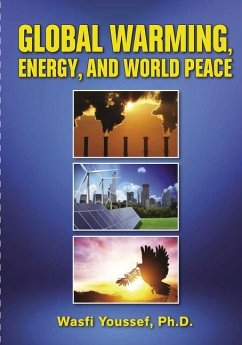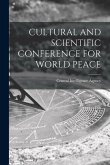This book explains in detail the cause of global warming. Global warming is caused by excessive emission of greenhouse gases resulting from burning fossil fuels (coal, oil, and natural gas). The most serious problem of global warming is the continuous rise of sea level. All published reports, articles, and books emphasize that the rise of sea level cannot be stopped, even if greenhouse gas emissions were reduced. Through research, I discovered that the rise of sea level can be stopped, or even reversed, if a portion of the water the rivers of the world discharge in the open seas (all the oceans, seas, and gulfs) are used to grow billions of trees and irrigate hundreds of millions of acres of agricultural crops. Mitigating global warming requires the implementation of new ideas. I recommend that the UN establishes a new committee, whose function is to develop new ideas that lead to global warming mitigation. Until such a committee is formed, I present some ideas of my own. One of these ideas is a modified refrigerator that in winter draws cold air from outside and use it to cool the refrigerator, which saves a lot of electricity. The UN is upfront in fighting global warming through several treaties. These treaties are explained in detail. The fossil fuels whose exploration and burning emit carbon dioxide and other greenhouse gases are explained. Many statistics regarding major fossil fuels producers, consumers, exporters, reserves, and greenhouse gas emitters are given. These statistics make the reader understand the magnitude of the global warming problem. These statistics indicate that fossil fuels will be depleted in this century. The question is, what will the world replace them? The energy sources that do not emit carbon dioxide are explained. However, the installed capacity of all these sources is less the increase in energy consumption. As a result, global warming is increasing, which is a big dilemma. I concluded that to reduce consumption of fossil fuels, thousands of nuclear power plants will have to be built. Nuclear power plants are not popular, because people fear radiation. For this, I studied nuclear-powered ships. In nuclear submarines, the crew are only feet away from the reactor. Yet, they do not get sick from radiation. Some of the precautions taken in military ships may be applied to commercial reactors. Also, smaller nuclear power plants, similar to those of militar ships, may have to be built. In order to fight global warming, there must be peace on earth. The Russian-Ukranian war is draining the financial and human resources of several developed countries. There is little money and human resources left to fight global warming. The attention of the media is focused on the offensive and counter offense that each party is inflicting on the other. Fighting global warming has been put on the backburner. World War lIl will likely be between China and the United States. The main reason is that China's GDP is expected to surpass that of the United States within a decade. As result, China's leaders think that China should replace the U.S. as the leader of the world, and the Chinese yuan should replace the U.S. dollar as the international currency of the world. The U.S. is determined that this doesn't happen. It began by imposing sanctions against big Chinese companies. But this can lead to war. It happened before. In the 1930s, when Japan invaded China and other surrounding countries, the U.S. imposed crippling sanctions against Japan. In response, Japan launched a surprise attack on the U.S. fleet anchored at pearl harbor. I fear that history is repeating itself. China's leaders are agonizing over the past opium wars. The opium wars and the Sino-Japanese wars are explained in detail. The military forces of China and the U.S. indicate that the U.S. is superior.








